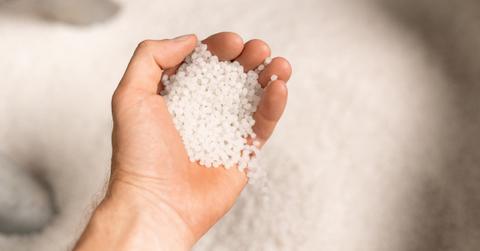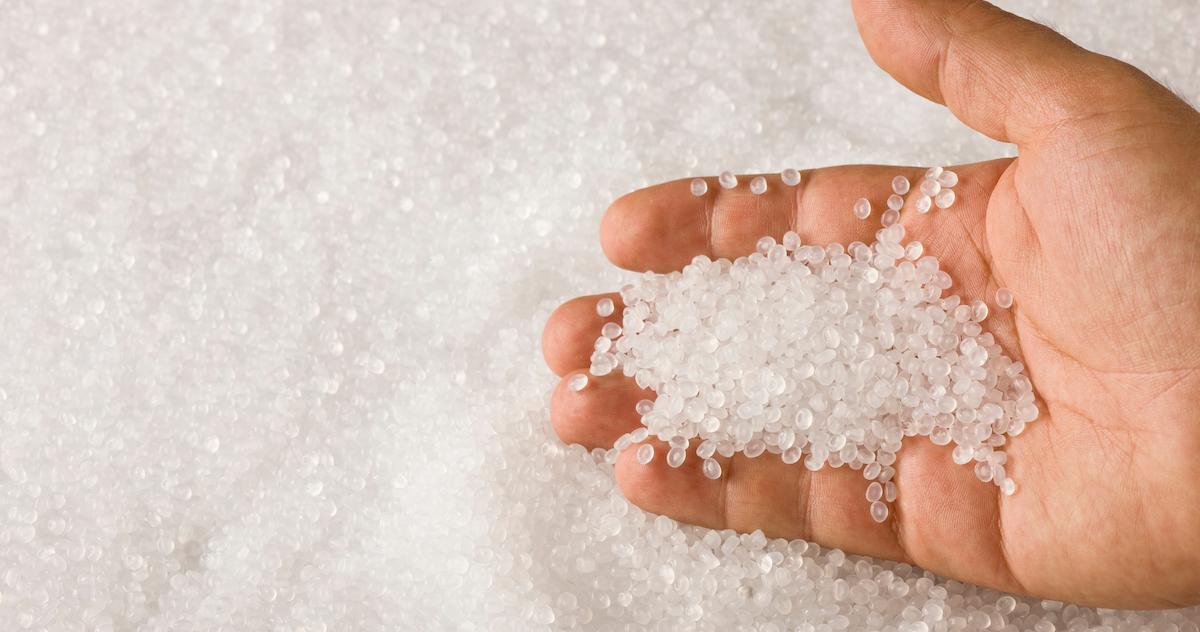TikTok Creators Give a Look Into "Nurdles," Plastic Pollutants Straight From the Oil Industry
Published March 23 2023, 4:31 p.m. ET

Have you ever seen a mysterious plastic pellet on the ground outside? If not, you will now.
Known as nurdles, these plastic pellets are a frustrating form of plastic pollution that has been found in pretty much every facet of nature — and is a disheartening reminder of how the plastic industry is hurting our planet. But what is a nurdle, exactly?
Recently, many online creators have been posting videos on TikTok, Instagram, and Reddit about their nurdle discoveries — keep reading to check out some of these oddly entertaining videos, and to learn all about nurdles.

What is a nurdle?
A nurdle is a nickname for the tiny plastic pellets used to make plastic items. Some people have taken to calling them "mermaid's tears."
Your plastic bottle, eyeglasses, patio furniture, polyester clothing, computer case, spatula, alarm clock, suitcase — they all were once nurdles.
Nurdles typically start out as natural gas or oil, and after being shipped to factories, they are melted, poured into molds, and then popped out in the form of lentil-sized and lentil-shaped nurdles, as per Vox. More specifically, they are around 5 millimeters in size, as per the Plastic Soup Foundation — not much bigger than a microplastic.
Nurdles can also start out as plastic themselves. When plastic is recycled (yes yes, we know about low plastic recycling rates, but it does happen sometimes...), it gets melted back down into nurdles.
Vox outlet adds that trillions of nurdles are produced every year. And as per The Guardian, nurdles are the No. 2 source of the ocean's micropollutants in the ocean by weight (tire dust is No. 1).
And unsurprisingly, with trillions of these little plastic beans in existence, it's no surprise that they have become a major source of plastic pollution.
As explained by the U.K.-based organization Fidra's nurdle-focused campaign, the Great Nurdle Hunt, after a factory produces nurdles, they are transported to other factories all around the world. Since nurdles are so tiny, it's common for some to spill, and make their way into nature. In fact, in the U.K. alone, an estimated 53 billion nurdles enter the country's oceans every year.
As the Great Nurdle Hunt notes, wild animals often eat nurdles (and plastic pollution in all of its shapes, really) thinking that they are food — especially because when Nurdles are clear, they resemble fish eggs, which many marine animals eat. This then tricks animals into thinking they are full, causing them to starve to death.
Nurdles also absorb toxins found in the air and water (such as pesticides), as per Ocean Blue Project, meaning they can present various threats to natural habitats, animals, and even us humans.

Creators have been sharing videos of themselves finding nurdles on TikTok and other social platforms.
Considering all of the above, it's really no surprise that nurdles are so easy to find. A recent Instagram video by @trashfish_cle showed a person using a small net to collect nurdles from a body of water after it rained.
"Look hard next time you’re at the beach or on a river bank…once you find your first one, you’ll never stop seeing them unfortunately!" one Redditor commented on the video, after it was shared to Reddit.
TikTok creator @lifeinthebayou, who is a Southern Biologist & Conservationist, received nearly 200,000 likes on a recent video in which she explained "nurdling."
Nurdling, aka nurdle hunting, involves going out into nature and collecting nurdles, and then submitting your findings to Nurdle Patrol (in the U.S.) or the Great Nurdle Hunt (in the U.K.). Doing this helps experts find out how nurdles scatter across our planet; it also, of course, helps remove nurdles from nature.
She recommends either keeping your nurdles in a small container at home, or even using them to make art.
The TikTok account for the organization Sustainable Coastlines Hawai’i shared a video showing two people discovering thousands of clear nurdles on a Hawaii beach. They picked up as many as they could by hand, but it was virtually impossible to get every single one.
"Nurdles: the oil industry’s plan B," the account captioned the TikTok.
On your next walk by a river or beach, hopefully you'll consider going nurdling. Just make sure to follow all appropriate nurdling guidelines — for example, always wear protective gloves, and make sure what you are collecting is actually nurdles — so that your nudle hunting journey is not only producing accurate data, but also safe for you.